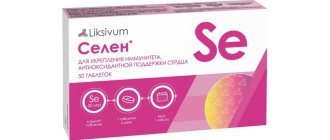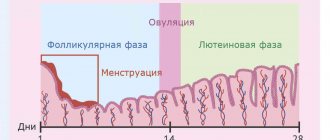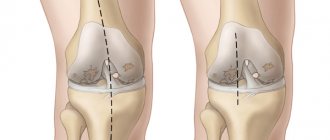Detailed description of the study
Bacteriological testing allows you to reliably determine the presence of pathogens in a sample submitted for diagnosis. To identify the pathogen, smears from the eyes (left and right), nasopharynx and oropharynx, left and right ear, as well as sputum are taken for analysis. The collection of biomaterial is carried out in places where bacteria are most likely to be detected, and is pre-prescribed by the attending physician.
Sowing on a nutrient medium is considered positive if, after a set time, the appearance of small, flat, opaque colonies of Haemophilus influenzae is noted on it.
Haemophilus influenza (Pfeiffer's bacillus) is a small bacterium (no more than 0.5 micrometers), round in shape, immobile, capable of forming a protective capsule (some strains are capsular). Located on the mucous membranes singly or in clusters.
It is transmitted exclusively from person to person. Routes of infection: airborne or, less commonly, contact. Children in the first 4-5 years of life (90-95% of the total number of identified episodes) and patients in the age group 65+ are especially susceptible to hemophilus influenzae infection. Despite the severe course of the disease, the pathogen is not highly contagious. In most cases - with strong immune defense - the penetration of the pathogen into the upper respiratory tract, the so-called entry gate of infection, is limited to asymptomatic carriage. In this case, the carrier spreads microorganisms when talking, sneezing, coughing, being a hidden source. It is extremely difficult to reliably determine the duration of the incubation period, since the disease can transform from carriage to manifest form, the main reason being a decrease in local immunity.
Acapsular hemophilus influenzae is a component of the normal microflora of the nasopharyngeal mucosa; according to various sources, it is detected in 70-90% of people. Capsulated bacteria are divided into 6 subtypes (depending on the antigenic composition of the shell), serotype b (Haemophilus influenza b, or HiB) is especially infectious for humans. Its representatives have a high ability to adhesion (“stick”) to mucous membranes and are the only ones capable of penetrating the systemic bloodstream.
There are 2 forms of the disease: invasive and non-invasive. In the first case, the rod is sown in fluids that should normally be sterile: pleural, pericardial, spinal, blood, etc.
Haemophilus influenzae infection comes in several varieties. The most common manifestations are otitis media (inflammation of the middle ear) and nasopharyngitis (inflammation of the nasal cavity and pharynx). In the first case, the disease is difficult to treat, which is due to the characteristics of the pathogen. It occurs with an increase in body temperature and severe pain on the affected side. In the second, there is pain when swallowing, redness and swelling of the mucous membrane of the pharynx, copious discharge from the nose of varying nature - from mucous to purulent - and intensity.
HiB is one of the main causes of epiglottitis among children who have not been vaccinated against this infection - inflammation of the epiglottis, the elastic cartilage of the larynx that blocks the entrance to the airways when swallowing. This disease is severe, with severe intoxication and a rapid increase in symptoms. Characterized by intense pain in the throat, difficulty swallowing and breathing.
The infection can also manifest itself as purulent meningitis (in about 50% of cases), pneumonia (according to WHO, for every 1 meningitis caused by Haemophilus influenzae, there are approximately 5-10 cases of confirmed acute disease) and sepsis.
In addition to the listed, most common variants of the infectious process, there are also non-invasive forms, in the vast majority of cases - conjunctivitis.
The bacteriological method is one of the most reliable and reliable ways to determine the causative agent of infection. Culture for Haemophilus influenzae infection during the development of otitis, nasopharyngitis, epiglottitis and other diseases allows us to assess the contribution of Haemophilus influenza to the development of the pathological process and select the optimal therapy.
H. influenzae b infection
The causative agent of Haemophilus influenzae is the bacterium Haemophilus influenzae (or Pfeiffer's bacillus) from the Pasteurellaceae (Hib) family. For a long time, hemophilas were considered the causative agent of influenza, since this infection most often occurs in the form of nasopharyngitis or acute respiratory infections without specific features, which led to its name. The bacterium is a small polymorphic rod, sometimes resembling a coccobacilli in shape. No doubt, it has a capsule. Cultivation requires blood, special additives and vitamins. Depending on the differences in the chemical structure and antigenic properties of the capsule, 6 serotypes of H. influenzae are distinguished (serotypes a, b, c, d, e, f), as well as non-capsular strains.
Infection with Haemophilus influenzae rarely leads to disease, but the spectrum of infectious lesions can be extremely wide and depends on the serotype of the pathogen. In adults, H. influenzae causes predominantly focal bronchopneumonia, often combined with severe tracheobronchitis. Pneumonia rarely becomes severe, but in some cases it can be complicated by exudative pleurisy, pericarditis, meningitis, arthritis, etc. Haemophilas are part of the normal flora of the upper respiratory tract; the level of asymptomatic carriage in children reaches more than 40%.
H.influenzae type b (Hib) has the most pathogenic properties and the ability to cause severe forms of the disease. Its virulent properties are associated mainly with the capsular polysaccharide and the production of membranotoxin.
In invasive forms of the disease, the pathogen is detected in sterile body fluids - CSF, blood, pleural fluid, etc. Non-invasive forms of infection include pneumonia (without bacteremia), sinusitis, otitis media, nasopharyngitis, conjunctivitis. With the generalization of the infectious process, invasive forms of infection develop, the most common manifestation of which is meningitis (51–65%), septicemia - 12%, epiglottitis - 10%, pneumonia (with bacteremia) - 8% in the structure of invasive Hib infections.
Children aged 6–48 months are most often susceptible to Hib infection, and less frequently, newborns and children over 5 years of age. The vast majority of cases occur between the ages of 3 months and 3 years.
Risk factors are:
- visiting organized children's groups (nurseries, kindergartens), especially closed ones (orphanages, boarding schools);
- artificial feeding;
- immunodeficiencies (primary and secondary, including HIV infection);
- chronic diseases (heart, lungs, diabetes).
The spread of infection occurs through airborne droplets or household transmission. In more rare cases - during childbirth, from a mother with Haemophilus influenzae colonization of the genital tract.
The source and main reservoir of infection is only humans. On average, among healthy children, bacteria carriers make up 2–5%, but in the environment of a sick person their proportion can increase to 30% or higher. Reducing the frequency of carriage helps reduce the incidence rate. In countries where vaccination against Hib infection has been introduced, the proportion of carriers in the population of healthy children has decreased to 0.5–1%.
Indications for examination
- Studies for epidemiological indications - among contact persons in the focus of Hib infection (most often Hib meningitis);
- preventive studies - in order to identify the level of carriage in the population, especially in closed children's groups;
- diagnostic studies - if there is a suspicion of epiglottitis, pneumonia, meningitis, septicemia, otitis, sinusitis, purulent arthritis, osteomyelitis.
Material for research
- Sputum, lavage fluid, punctates (if pneumonia is suspected); purulent discharge, punctates; (otitis media, sinusitis); CSF, blood; (meningitis, menigoencephalitis); blood (septic conditions); punctates (purulent arthritis, osteomyelitis); sectional material; throat smear (examination of contacts at the site of Hib meningitis and carrying out preventive studies) - cultural studies;
- CSF, blood, punctures – detection of DNA fragments;
- CSF, blood – detection of hypertension.
Etiological laboratory diagnosis includes
microscopy of the studied material, seeding of the material with further cultural and biochemical identification of the pathogen, determination of antibiotic sensitivity; detection of genetic fragments of Hib DNA and Hib Ags in sterile body fluids.
Differential diagnosis
carried out with microbial agents:
- For epiglottitis - with pathogens causing true and false croup (C.diphtheriae, S.pyogenes, various viruses);
- for meningitis - with pathogens that cause purulent meningitis (N.meningitidis, S.pneumoniae, S.aureus, etc.);
- for pneumonia – S.pneumoniae, C.pneumoniae, M.pneumoniae, L.pneumophila, S.aureus, Enterobacteriaceae family, influenza viruses;
- for otitis and sinusitis – S.pneumoniae, Ps.aeruginosa, S.aureus, M.catarrhalis, S.pyogenes, yeast fungi of the genus Candida;
- for purulent arthritis, osteomyelitis – S.aureus, E.coli, anaerobic infection.
Comparative characteristics of laboratory diagnostic methods.
Microscopic examinations are used to detect Haemophilus influenzae in different types of biological material: cerebrospinal fluid, blood, punctates of sterile loci, punctates of non-sterile loci (sputum, smears from the throat, paranasal sinuses, ear, etc.). Microscopy, as an independent study, is usually not performed, as it has little diagnostic value. Microscopic examination can only be used to decide the suitability of sputum or lavage fluid for culture (the smear must contain more than 25 segmented leukocytes and less than 10 epithelial cells in the field of view), as well as to determine microbial associations.
For inoculation with further cultural and biochemical identification of the pathogen, determination of antibiotic sensitivity, materials from sterile loci (blood, cerebrospinal fluid, synovial, pericardial, pleural fluid) and various material from non-sterile loci are used.
An important problem for the treatment of Hib infection is the increase in resistance to β-lactam antibiotics, primarily ampicillin, caused by the production of plasmid β-lactamases. In addition, there is an increase in resistance to gentamicin, erythromycin, and chloramphenicol in the world.
When determining the sensitivity to antibiotics of a culture isolated from non-sterile loci, resistance to ampicillin, ampicillin/sulbactam, and co-trimoxazole is first examined. It is advisable to test for β-lactamase production with nitrocefin. As additional drugs to characterize the strain, the study includes II–III generation cephalosporins, tetracyclines, macrolides, chloramphenicol, and fluoroquinolones.
Strains isolated from cerebrospinal fluid and blood are tested for sensitivity to ampicillin, third-generation cephalosporins, carbapenems, chloramphenicol; other drugs (tetracyclines, macrolides, fluoroquinolones) are added for a more complete characterization of the culture.
Detection of Hib Ag in sterile body fluids (cerebrospinal fluid, blood) is performed using reagent kits based on latex agglutination or coagglutination reactions.
Detection of Hib DNA fragments is carried out by PCR. The study is based on the detection of a specific fragment of the bex A gene, encoding the pathogen protein associated with the capsule and is carried out only with material obtained from sterile loci (CSF, blood, punctates)
Features of interpretation of laboratory research results.
The diagnosis of Hib infection is considered established in the following cases:
- isolation of bacteria H.influenzae type b from biomaterial samples;
- identifying bacteria similar in morphology to Haemophilus influenzae (polymorphic gram-negative rods) in biomaterial samples taken from sterile loci and obtaining a positive result for identifying AG in the latex agglutination reaction used to detect AG;
- detection of specific Hib DNA fragments by PCR in biomaterial samples taken from sterile loci.
What else is prescribed with this study?
Meningococcus, Haemophilus influenzae, streptococcus (Neisseria meningitidis, haemophilus influenzae, streptococcus pneumoniae, PCR) scraping, quality.
19.52.2. Scraping 2 days
870 ₽ Add to cart
Determination of pathogen sensitivity to antibacterial drugs (DDM)
01. 1 day
490 ₽ Add to cart
Determination of pathogen sensitivity to an expanded range of antibacterial drugs
02. 2 days
600 ₽ Add to cart
Determination of pathogen sensitivity to an expanded range of antibacterial drugs, with determination of the minimum inhibitory concentration (MIC, MIC)
13. 2 days
960 ₽ Add to cart
Sowing the discharge of the upper respiratory tract for microflora (nose, pharynx)
120.2. Scraping 4 days
690 ₽ Add to cart
References
- Ozeretskovsky, N.A., Nemirovskaya, T.I. Vaccination against hemophilus influenzae type b in the Russian Federation and abroad. Epidemiology and vaccine prevention, 2021. - T. 15(1). — P. 61-6.
- Koroleva, I.S. Epidemiological features of carriage of Haemophilus influenzae type b. Epidemiology and infectious diseases, 2000. - No. 3. - P.15-19.
- Haemophilus influenzae type b (Hib) Vaccination Position Paper. WHO. Weekly epidemiological record, 2013. - Vol. 88(39). — P. 413-28.
- Watt, J., Wolfson, L., O'Brien, K. et al. Burden of disease caused by Haemophilus influenzae type b in children younger than 5 years: global estimates. Lancet, 2009. - Vol. 374(9693). - P. 903-11.
Haemophilus influenzae (hemophilus influenzae)
Haemophilus influenzae
or
Pfeiffer
or
Pfeiffer
, or
Afanasyev-Pfeiffer bacillus
(
Haemophilus influenzae
) is a type of gram-negative bacteria.
The causative agent of serious human diseases. Fixed ovoid rod-shaped coccobacilli, 0.2-0.3 by 0.3-0.5 microns in size. It is located singly, in pairs and in clusters, sometimes forming a capsule. Has no flagella. The source and target of Haemophilus influenzae
is only humans.
The reservoir of infection most often turns out to be bacteria carriers or patients with acute respiratory diseases that occur in a mild or clinically unexpressed form when they are not isolated. The frequency of bacterial carriage in a population of healthy children ranges from 60 to 90% for non-capsular forms of Haemophilus influenzae
, and, along with
Streptococcus pneumoniae,
is a component of the normal microflora of the upper respiratory tract in children under 5 years of age.
The frequency of carriage of noncapsular forms of Haemophilus influenzae
among healthy young children is slightly less than 50% (V.V. Maleev et al.).
According to the structure of the K-antigen, all known strains of Haemophilus influenzae
divided into 6 serotypes (AF). The main epidemic danger is serotype B (often abbreviated HiB).
Diseases caused by Haemophilus influenzae
| Brain with meningitis caused by Haemophilus influenzae |
Infection caused by Haemophilus influenzae
represents a serious medical problem due to the significant spread of its various clinical forms, frequent generalization, severe disease with frequent complications and mortality up to 30%.
Most often, Haemophilus influenzae
is the etiological factor in the occurrence of purulent meningitis, pneumonia, epiglotitis, otitis, arthritis, cellulitis, pyelonephritis, conjunctivitis in weakened individuals, mainly in infants and the elderly; Often the disease becomes generalized.
Long-term clinical and bacteriological monitoring carried out at the Research Institute of Pediatrics of the Scientific Center for Children of the Russian Academy of Medical Sciences allowed us to establish that the microbial spectrum in chronic bronchopulmonary diseases in children during the period of exacerbation is represented mainly by two pneumotropic microorganisms. At the same time, Haemophilus influenzae
is the dominant causative factor in the infectious process, accounting for 61–70%, of which in 27% of cases it is in association with
Streptococcus pneumoniae
(Sereda E.V., Katosova L.K.).
An acute infectious disease, clinically manifested by hoarseness and stenosis of the respiratory tract (up to asphyxia), is epiglottitis, the etiological factor of which in most cases is Haemophilus influenzae
, type B (Soldatsky Yu.L., Onufrieva E.K.).
Pneumonia
Pneumonia is a form of acute respiratory infection that affects the lungs.
In pneumonia, the alveoli of the lungs fill with pus and fluid, making breathing painful and limiting oxygen supply. Pneumonia is the leading single infectious cause of death in children worldwide. In 2013, 935 thousand children under the age of 5 died from pneumonia. It accounts for 15% of all deaths in children under 5 years of age worldwide.
There are several ways pneumonia can spread. Bacteria that are usually present in a child's nose or throat can infect the lungs when inhaled. They can also be spread through respiratory droplets from coughing or sneezing. In addition, pneumonia can be transmitted through blood, especially during or immediately after childbirth.
In children under 5 years of age with symptoms of cough and/or difficulty breathing, with or without fever, the diagnosis of pneumonia is made if there is rapid breathing or lower chest indrawing, if the chest retracts or recedes when inhaling (in a healthy person When you inhale, the chest expands.
The CAPNETZ prospective cohort study in Germany found that Haemophilus influenzae
is a very common causative agent of community-acquired pneumonia, especially in patients with previous vaccination with pneumococcal vaccine and the presence of concomitant pathology of the respiratory tract. The severity of the disease and the presence of chronic liver pathology are risk factors for the development of a lower rate of early clinical response to therapy (Forstner C. et al. Infect. 2021 Feb 29).
Pneumonia caused by bacteria can be treated with antibiotics. The antibiotic of choice is amoxicillin dispersible tablets (WHO Inf. Bulletin No. 131).
Haemophilus influenzae in the taxonomy of bacteria
The species Haemophilus influenzae
belongs to the genus Hemophilus (lat.
Haemophilus
), which is included in the family
Pasteurellaceae
, order
Pasteurellales
, class gamma-proteobacteria (lat.
γ proteobacteria
), phylum proteobacteria (lat.
Proteobacteria
), kingdom Bacteria.
Vaccines and antimicrobial agents active against Haemophilus influenzae
The following antibiotics (from those presented in this guide) are active against Haemophilus influenzae:
ciprofloxacin
,
levofloxacin, norfloxacin, oflaxacin, moxifloxacin, doxycycline, tetracycline, amoxicillin, josamycin, rifabutin, azithromycin.
Haemophilus influenzae
retains high sensitivity to ampicillin, amoxicillin, amoxicillin/clavulanate, azithromycin, chloramphenicol, aminoglycosides and cephalosporins of II–III generations.
Almost all strains of Haemophilus influenzae
are resistant to antibiotics such as oxacillin (84%), oleandomycin (97%), lincomycin (100%), which indicates the inappropriateness of their use in these cases (Sereda E.V., Katosova L.K. .).
According to a group of researchers who performed a multicenter prospective study of PeGAS (O.V. Sivaya et al.), beta-lactams (amoxicillin, amoxicillin/clavulanate, ceftriaxone, cefotaxime, ceftibuten), macrolides, levofloxacin and moxifloxacin are the most active drugs against Haemophilus influenzae
in Russia.
Despite the high activity
of tetracycline and chloramphenicol Haemophilus influenzae Given the low activity of co-trimoxazole, this drug is not recommended for empirical treatment of infections caused by Haemophilus influenzae.
It should be noted that, as Prof. Yakovlev S.V. (2015), regarding the activity of macrolide antibiotics against Haemophilus influenzae
There have been active discussions for many years.
According to reference manuals and instructions for medical use, macrolides are active against Haemophilus influenzae
, however, the interpretation of the results of assessing the sensitivity
of Haemophilus influenzae
to macrolides is controversial.
The minimum inhibitory concentration (MIC) of all macrolides against Haemophilus influenzae
is significantly higher than against Gram-positive bacteria, as well as compared to the MIC of beta-lactams.
This fact is explained by the presence in Haemophilus influenzae
of a constitutively functioning system for active excretion of macrolides.
Pharmacodynamic calculations indicate that the concentrations of macrolides created at the site of infection are insufficient to eradicate Haemophilus influenzae
.
The above facts sufficiently confirm the point of view of European EUCAST experts that Haemophilus influenzae
should be considered naturally resistant to macrolide antibiotics.
In the Anatomical Therapeutic Chemical Classification (ATC) in the section “J07 Vaccines” there is a separate section “J07AG Vaccines against Haemophilus influenzae
B".
In Russia, three vaccine preparations are approved for use for the prevention of diseases caused by Haemophilus influenzae
type b: Hiberix (English:
Hibe rix
), Act-HIB (English: Act-HIB) and “Hemophilus influenzae type b conjugate vaccine” (produced by the Rostov Research Institute of Microbiology and parasitology).
Instructions from the manufacturer of the vaccine against Haemophilus influenzae
US type
b
In addition, there are complex vaccines designed to prevent a number of infections, including those caused by Haemophilus influenza
, For example:
- Pentaxim is a vaccine for the prevention of diphtheria and tetanus, adsorbed, acellular pertussis, inactivated poliomyelitis, infection caused by Haemophilus influenzae
type b, conjugated (Sanofi Pasteur) - Infanrix Hexa is a vaccine for the prevention of diphtheria, tetanus, whooping cough (acellular), polio (inactivated), hepatitis B combined, adsorbed in combination with a vaccine for the prevention of infection caused by Haemophilus influenzae
type b (GlaxoSmithKline)
Haemophilus influenzae in ICD-10
Haemophilus influenzae
mentioned:
- in “Class I. Some infectious and parasitic diseases” of the International Classification of Diseases ICD-10, in blocks:
- "A30-A49 Other bacterial diseases", under "A41.3 Septicemia due to Haemophilus influenzae
" and "A49.2 Infection due to
Haemophilus influenza
, unspecified" - "B95-B98 Bacterial, viral and other infectious agents", under "B96.3 Haemophilus influenzae
[
H. influenzae
] as a cause of diseases classified elsewhere." ICD-10 code B96.3 is intended to be used as an additional code when it is appropriate to identify infectious agents of diseases classified elsewhere
.
Bronchopneumonia caused by H. influenzae
»
On the website GastroScan.ru in the “Literature” section there are subsections “Microflora, microbiocenosis, dysbiosis (dysbacteriosis)” and “Bronchopulmonary diseases associated with gastrointestinal diseases”, containing publications for healthcare professionals.
In the video “Semiotics of cough in children,” aimed at pediatricians, Professor D.Yu. Ovsyannikov addresses problems associated with bacterial bronchitis in children, associated, in particular, with Haemophilus influenzae
.
Back to section







